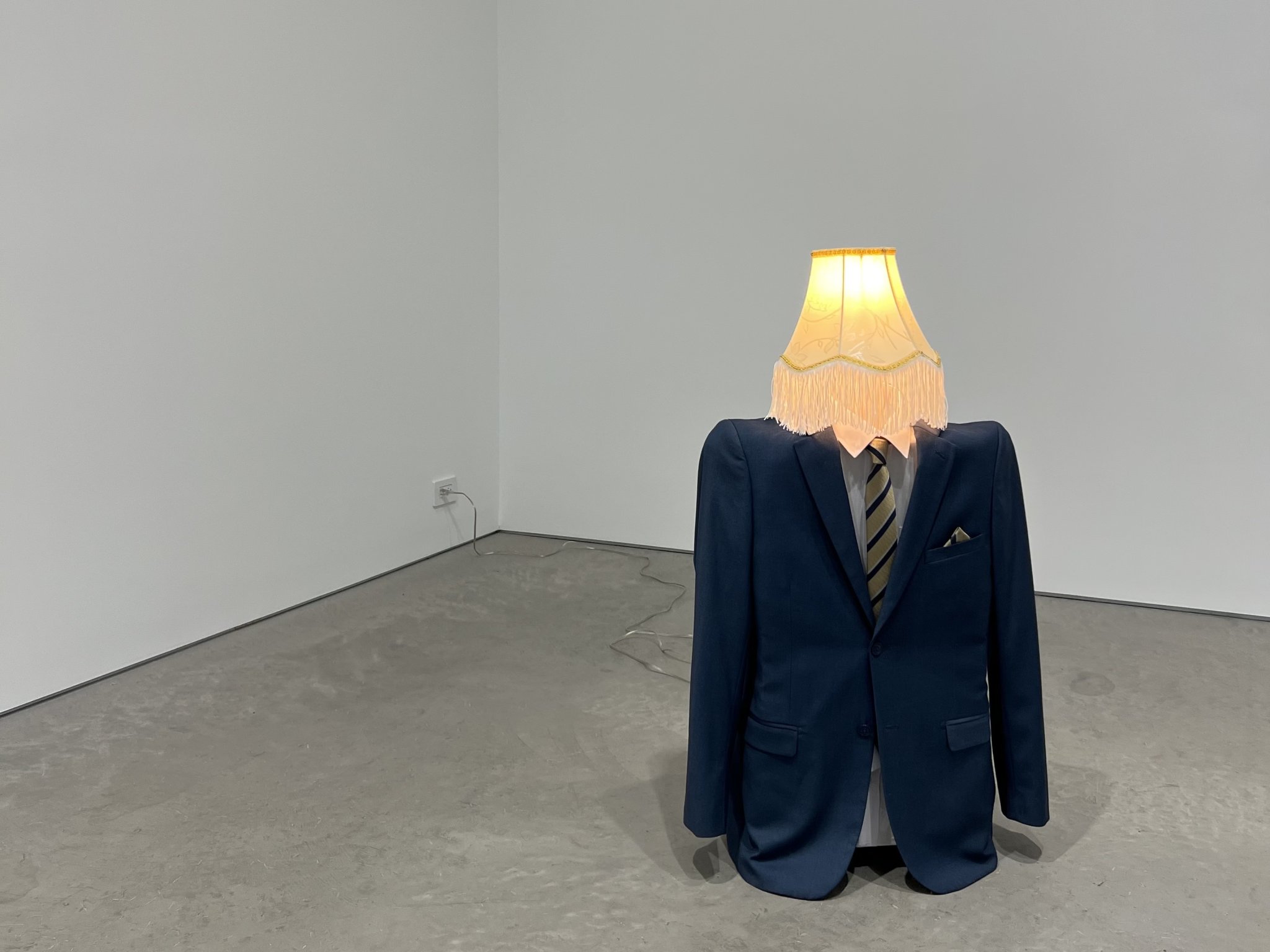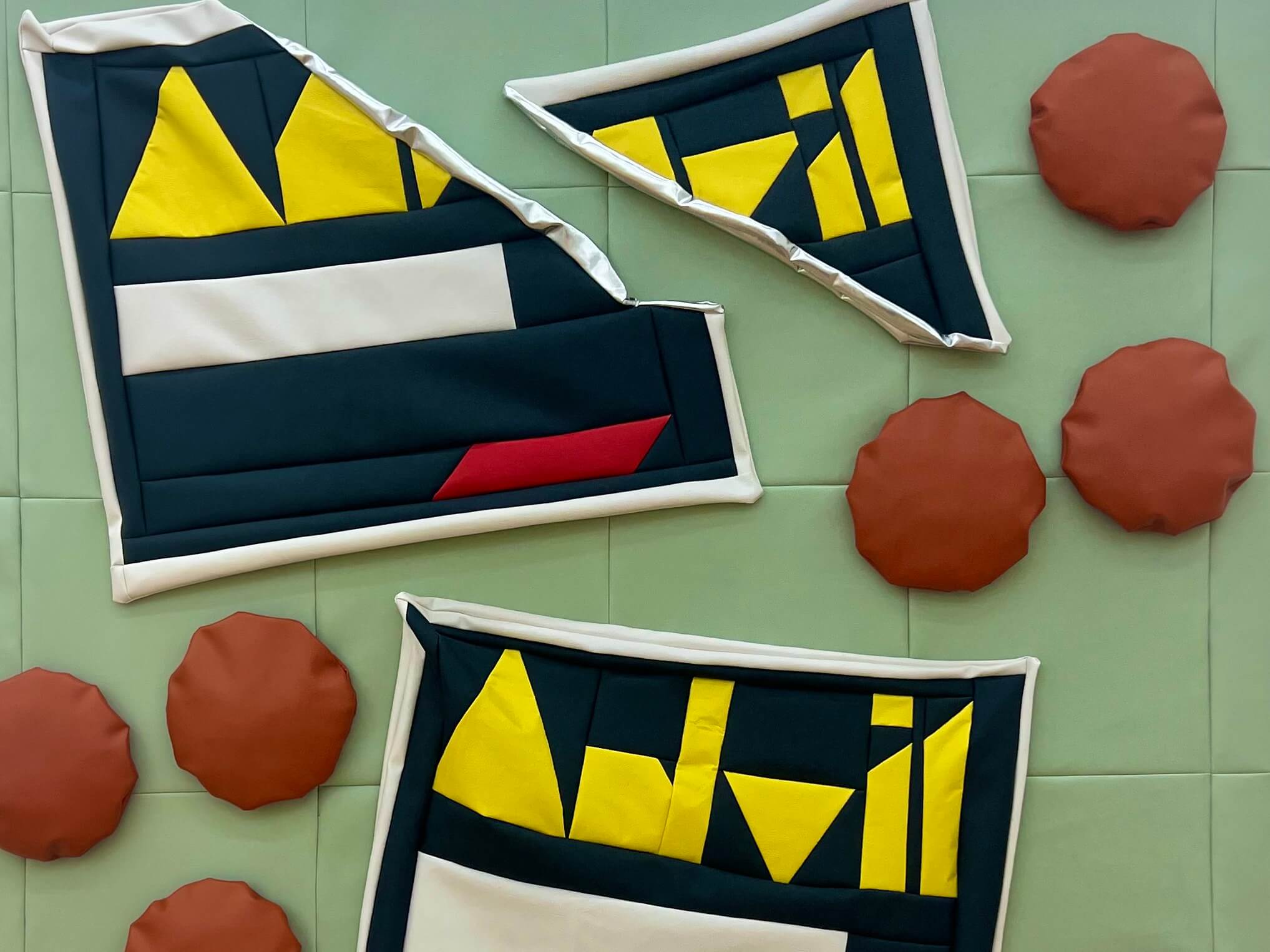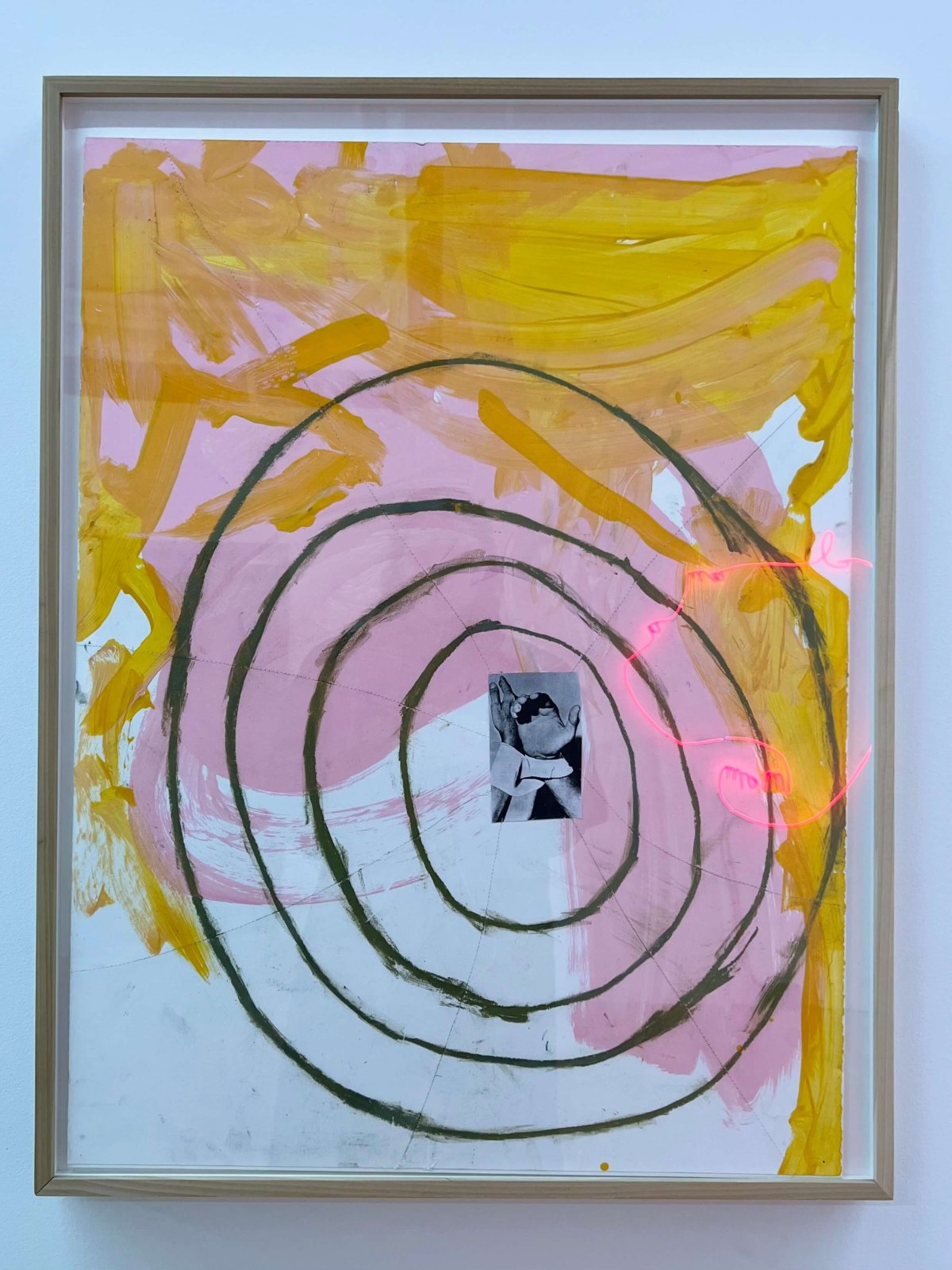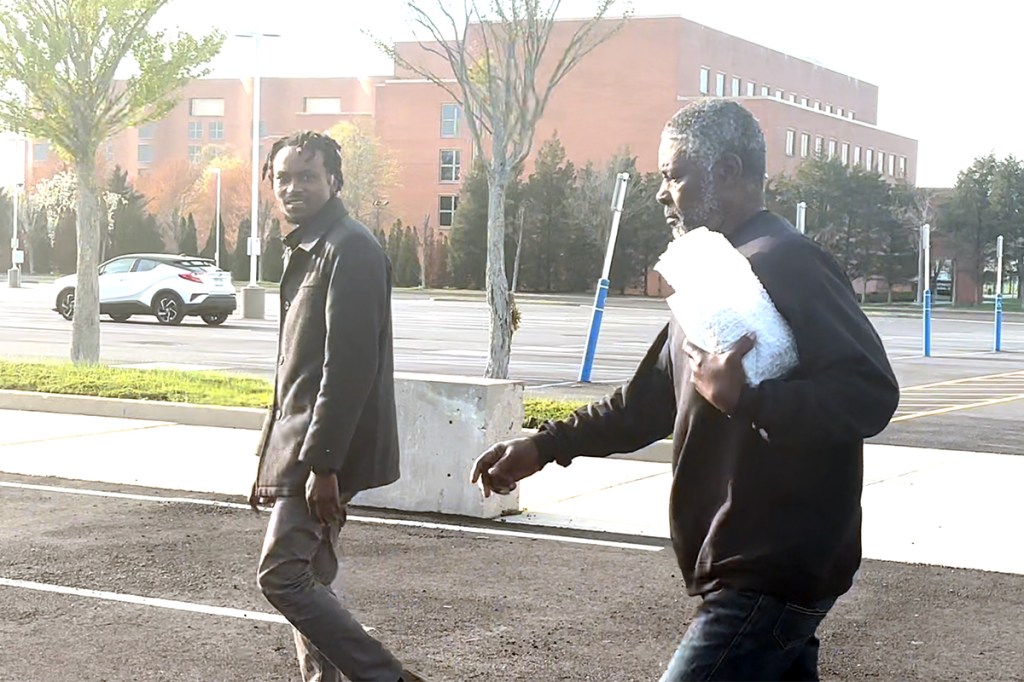Art Walk NYC: Tribeca Gallery Guide January 2025

Check out these fascinating and culturally relevant galleries and art exhibitions throughout New York City’s Tribeca neighborhood this month.
Tribeca Gallery Shows in January 2025
Matthew Brown
Pippa Garner: Misc. Pippa, Through January 25
390 Broadway
I just want to make sure my body ends up where it belongs when I die: in the junkyard with the appliances I’ve made fun of throughout my career. —Pippa Garner
After a provocative, five-decades-long career, the vivacious Pippa Garner died last month on December 30 at age 82. “She wanted a trans president, universal healthcare, the end of testosterone toxicity overload and pet-troll-eum, hormones for all, lusty living to the very end,” the Instagram post announcing the artist’s death read.
Comprising a jumble of car parts, screens, iconoclasm, and kitsch, Misc. Pippa at Matthew Brown is a repository of studies and satire, concepts, and contraptions. The New York show is one half of a collaboration between Matthew Brown and the Los Angeles gallery Stars. If the LA iteration reeks of girlhood—think Lolita meets Back to the Future compressed into a comic strip—its New York counterpart oozes unserious virility. A series of quasi-mechanical pencil drawings line the longest wall of the gallery. Referencing instruction manuals’ and advertisements’ format and diction, the sketches satirize car culture, consumerism, machismo, youth obsession, and Americana. Lo-fi cyborgs litter the floor: a boarded-up television set, a tuxedoed torso with a lampshade for a head, and a chair lined with plunger heads standing on vacuum tubes for legs.
One could expect no less from the offspring of a “gender hacking” (to use her words) auto-designer-turned-conceptual-artist. It is impossible to determine where the artist’s body ends, and her body of work begins. In the 1980s, Garner started taking illicitly acquired hormones after her doctor refused to prescribe them, which she framed as an artistic endeavor as much as a personal one; she continued to tinker with her biology in the years to follow.
Rest in peace, Pippa. The junkyard is lucky to have you.

Broadway Gallery
Al Freeman: Room Service, Through February 1
375 Broadway
Walking into Broadway Gallery dislodged the gleeful sensation buried deep in my consciousness of entering one of those padded indoor playscapes that monopolized children’s birthday parties for the better part of the 2000s. Poking fun at the failed seriousness of masculine high and low culture alike, satirizing pop artists in the same breath as plumbers, Al Freeman’s delightfully off-putting stuffed pleather sculptures are too self-aware to be camp but pull the breaks before they cross over into cringe.
While the work that makes up Room Service is entirely wall-based, Freeman is better known for her supersized, free-standing replicas of traditionally masculine objects, such as hoses and measuring tapes, inflated but collapsing in on themselves. Deprived of their solidity and usefulness, the objects become pathetic tokens of a puffed-up sense of self that turns out to be full of air.
Scanning the gallery, the sewn-vinyl surfaces cohere into the broken blur of a hotel room the morning after. Torn-open Advil packets lying on an infuriatingly tranquil spa-green floor beget familiar pangs of regret; goldfish and pennies litter pinstriped linen sheets; red solo cups and Jager bottles clash with a black-and-white checkered bathroom floor. Although the generic, cushy surfaces are far from cozy and bear no resemblance to “home,” there is something deeply comforting in the freedom to emerge from the wreckage and never look back.

Gaa New York
Dani (Leventhal) Restack + Sheilah (Wilson) ReStack: Backwards Shhhh, Through January 25
4 Cortlandt Alley / 368 Broadway
In a refreshing turn of events, the childlike markings that fill the back gallery of Gaa are the work of, well, children. A playful collaboration between Dani (Leventhal) and Sheilah (Wilson) ReStack and their daughters, the work untangles queer family, domesticity, and femininity. Their eldest daughter Rose’s charcoal footprints dance across the surface of 18 Wolves as Aides. The visual journal Etels Up Trap is an interplay of the mothers’ gestures and their daughter Sky’s, with a black-and-white photograph stitched onto the paper.
Dani (Leventhal) explores emotional and sensorial states through tactile videos and works on paper, while Sheila (Wilson)’s primarily lens-based work is a feminist investigation into queer desire and motherhood. Over the years, they have maintained their individual practices while, at times, allowing them to merge.
I was left wishing that Backwards Shhhh had not been relegated to the small gallery at the back of Gaa, past a solo show of (albeit more sellable) paintings by Johanna Seidel named for a Lana Del Rey song. Although the work itself does not necessitate a vast space—the exhibition consists of five works, the largest of which, a neon sculpture circuitously spelling out “I am mom,” is about 50 x 42 inches—it could have benefitted from room to breathe. Nevertheless, the energy imbued in the collective imprints and mappings emanates far beyond the unassuming space off of Cortlandt Alley.

PPOW
Hunter Reynolds / Dean Sameshima: Promiscuous Rage, Through January 25
392 Broadway
Anonymous nude. Anonymous friends. Anonymous Berlin stories. Empty metal-frame beds, a wall of angels deprived of its verticality.
Through painting, print, installation, ephemera, and photo weavings, Dean Sameshima and the late Hunter Reynolds articulate an acute sense of loss intermingling with irrepressible ecstasy, resulting in a ferocity that is deeply of its time but refuses historicization. By means of often conflicting modes and methodologies, the intergenerational pair presents a fractured narrative that is nonetheless unflinchingly intimate.
In the hands of Reynolds and his alter ego, Patina du Prey—for whom he concocted a decadent wardrobe of taffeta ball gowns and deftly crafted corsets—gender was a carnivalesque spectacle, replete with scholarly feminist maenads and music box figurines come to life. Reynolds also dragged the AIDS crisis out into the light through both his art and his work with ACT UP, wearing his HIV-positive status on his sleeve and confronting head-on the disease that decimated the community.
Equal parts artist, documentarian, and archivist Sameshima takes the opposite approach: playing on the Reagan-era silence surrounding the AIDS epidemic, his Anonymous Portrait series (ongoing) gestures to the unfathomable pain of mourning lives deemed ungrievable. The LA-born, Berlin-based artist enshrines countless lives lost in deliberately vague acrylic and silkscreen works, each bearing a different phrase alluding to late-twentieth-century gay masculine culture.
Promiscuous Rage enacts a living archive, not only memorializing lives and histories lost but rearticulating the work of other twentieth-century gay artists and thereby displacing the artist-as-genius trope. Reynolds’ photo quilt Felix Bead Curtain (2018) comprises an assemblage of light and shadow studies of Félix González-Torres’ bead curtain installations, minimalist meditations on death, mourning, and contagion. Jack Brusca’s Bed of Angels (1990/2018), a photo quilt draped over a bed frame referencing a hospital setting, recalls the eponymous artist and friend’s “wall of angels.”
Despite the familiarly sterile gallery space in which it is situated, Promiscuous Rage is anything but.



